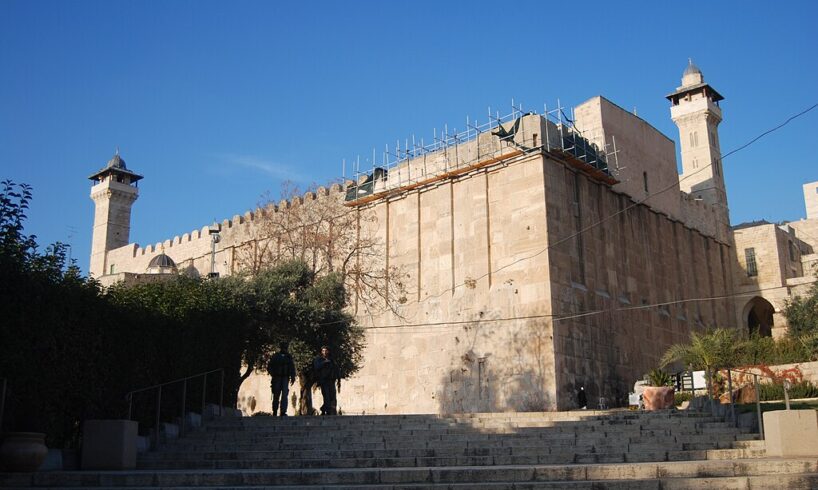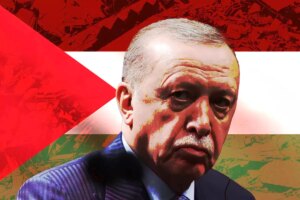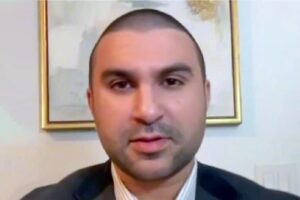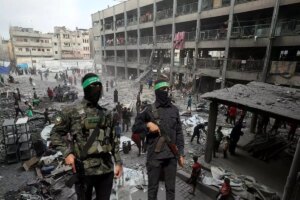
If you’ve been following along with the weekly Torah portions, you know that in recent weeks we’ve been reacquainted with Abraham — the man who left his homeland and his family, to follow Hashem.
Last week’s portion, Vayera, reached its dramatic climax with the Akeidah, the binding of Isaac. This week, in Chayei Sarah, we read that Sarah has passed away, and Abraham searches for a suitable place to bury her.
Abraham approaches the Hittites, specifically to a man named Ephron ben Tzohar, to purchase a burial site. Though Ephron initially insists that Abraham take the land for free, Abraham insists on paying the full price, ensuring the land will belong to him and his descendants. This burial site is the Cave of Machpelah in Hebron.
According to Jewish tradition, the Cave of Machpelah became the burial place of our patriarchs and matriarchs — Abraham and Sarah, Isaac and Rebecca, and Jacob and Leah — and some even say Adam and Eve are buried there too.
The burial of Sarah. Genesis 23:19. Illustration by Gustave Doré (Wikimedia Commons)
Remarkably, this sacred site is still accessible today. In fact, thousands of Jews — men, women, and children — will travel to Hebron and spend this coming Shabbat — sundown on Friday, November 14 to sundown on Saturday, November 15 — at the Cave of Machpelah, joining together in prayer and celebration.
Shabbat Chayei Sarah today
Hebron today is a deeply complex and significant place. It’s located in the West Bank, an area also sometimes called by its ancient historical name, Judea and Samaria. It’s home to both Israelis and Palestinians, Jews and Muslims. Hebron is unique in that it is the only West Bank city that is divided into two distinct zones, known as H1 and H2: areas respectively administered by the Palestinian Authority and Israel.
At the heart of the city lies the Cave of Machpelah, a holy site for both Jews and Muslims, which is divided between the two groups of worshippers throughout the year. The side accessible to Jews and Israelis contains the symbolic tombs of Abraham and Sarah, and Jacob and Leah. The side accessible to Palestinians contains the symbolic tombs of Isaac and Rebecca.
The tombs are considered symbolic because the actual burial chambers are a level below and not accessible to visitors. Still, many gather in the rooms above to pray, reflect, and connect with the matriarchs and patriarchs — believing that their prayers will be answered in the merit of the patriarchs and matriarchs.
However, for 10 days a year, access to the cave is restricted to one faith community at a time, depending on the respective religious holidays. Shabbat Chayei Sarah — the very week when we read about Abraham purchasing the cave — is one of those rare occasions when the entire site is open exclusively to Jews.
So, when did the custom of visiting the Cave of Machpelah for Shabbat Chayei Sarah begin, and what happens during this Shabbat?
Celebrating in Hebron today
This custom is relatively recent, beginning in the 1990s. Originally, it began as a political statement meant to show support for Jewish settlers living in Hebron after the city’s partial division. Over time, however, it has become a national celebration and an opportunity for all Jews to see the full Cave of Machpelah when it is completely accessible, drawing Jews from around the world.
While most of the Jews who participate are religious, Jews of all backgrounds have taken this opportunity to visit Hebron and the burial site of our patriarchs and matriarchs on the Shabbat that we read about its original purchase.
Because Hebron’s a small city and the crowds of Shabbat visitors are so large, many set up tents outside near the cave. There is also a nearby yeshivah and community centers where many stay during Shabbat.
In 2022, my brother was an active-duty IDF soldier stationed in Hebron during Shabbat Chayei Sarah. He described a scene filled with joy, singing, and dancing as people streamed in and out of the Cave of Machpelah throughout the day. Due to the large crowd and the area’s ongoing tensions, there were additional security forces who were deployed there on Shabbat to protect the thousands of Jews who came to celebrate there for Shabbat. Visitors showed their gratitude by sharing food, snacks, and sweets with the soldiers— small gestures of appreciation for their service and protection..
Throughout the Shabbat, Hebron comes alive with many Torah classes, large group meals, and unique tours around the city. Members of Knesset and IDF officers participate in the celebrations. In addition, all across the city, there are onegs — festive gatherings that combine learning, song, and noshing after the Friday night meal — most often with well-known rabbis and scholars held late into the night throughout the city.
While known by many Israelis since it began, the Shabbat Chayei Sarah weekend has become a tourist attraction for Jewish visitors from around the world, eager to experience this unique blend of history, spirituality, and community.
Before October 7, tens of thousands would go to Hebron for Shabbat Chayei Sarah. But for the past two years, security concerns have limited participation to no more than a few thousand people. It remains unclear how many people will be permitted to attend this year.
Still, the enthusiasm endures. There will surely be a lot of people, all of whom will be very excited to celebrate. The Hebron Fund has even launched a VIP registration, which will include: meals with Israeli Members of Knesset and IDF officers, unique prayer services, reading the Chayei Sarah portion in Rebecca and Isaac’s cave, accommodations and transportation, and even swag.
What first unfolded in the Torah thousands of years ago continues to echo through Jewish history today — as thousands of Jews return to that same place to celebrate the covenant that began there.
Will you be celebrating Shabbat with our patriarchs and matriarchs next year?





